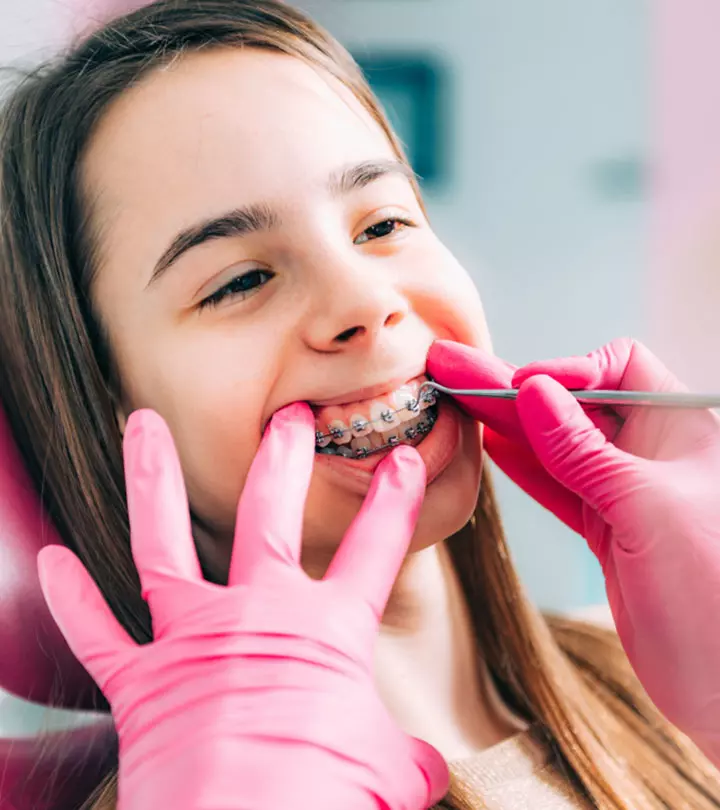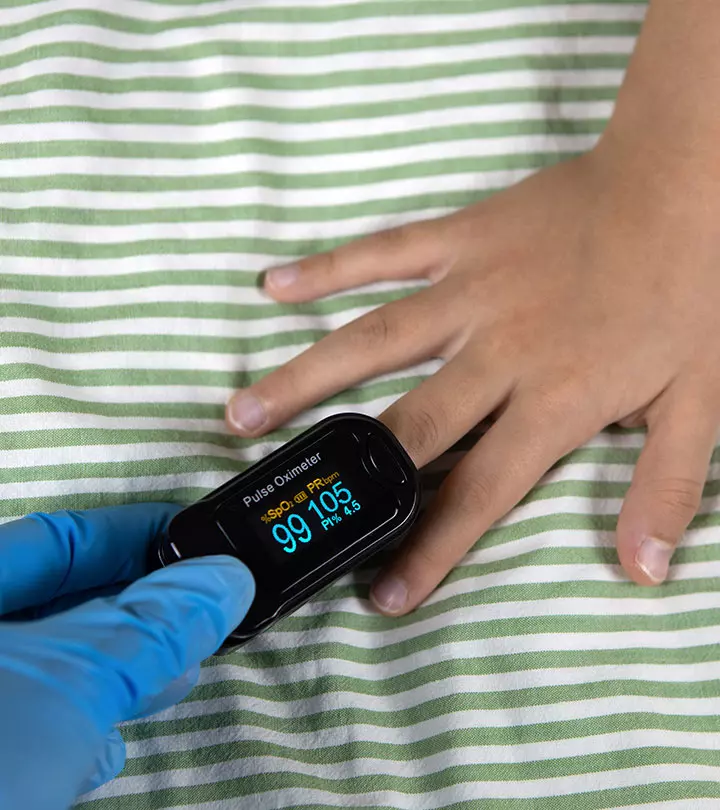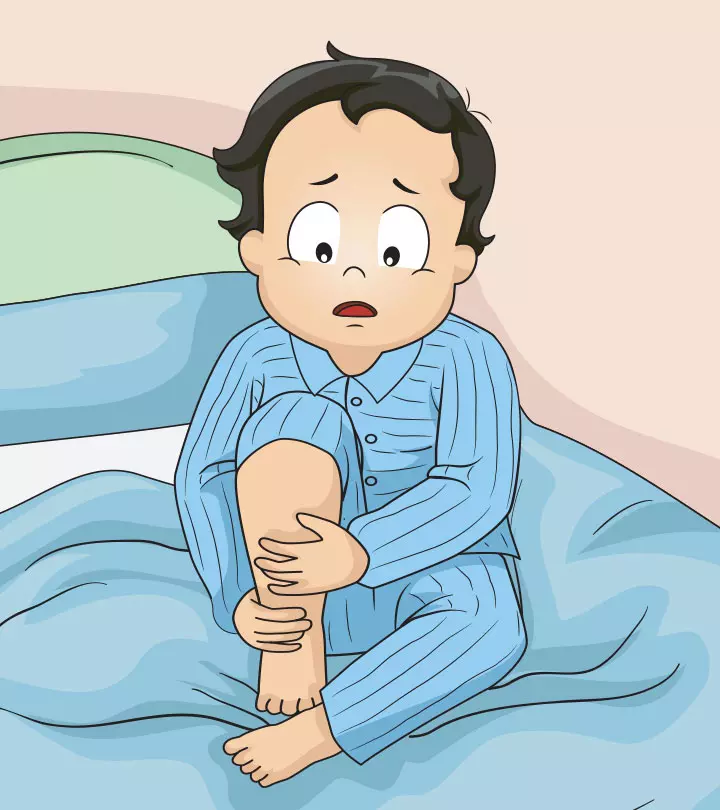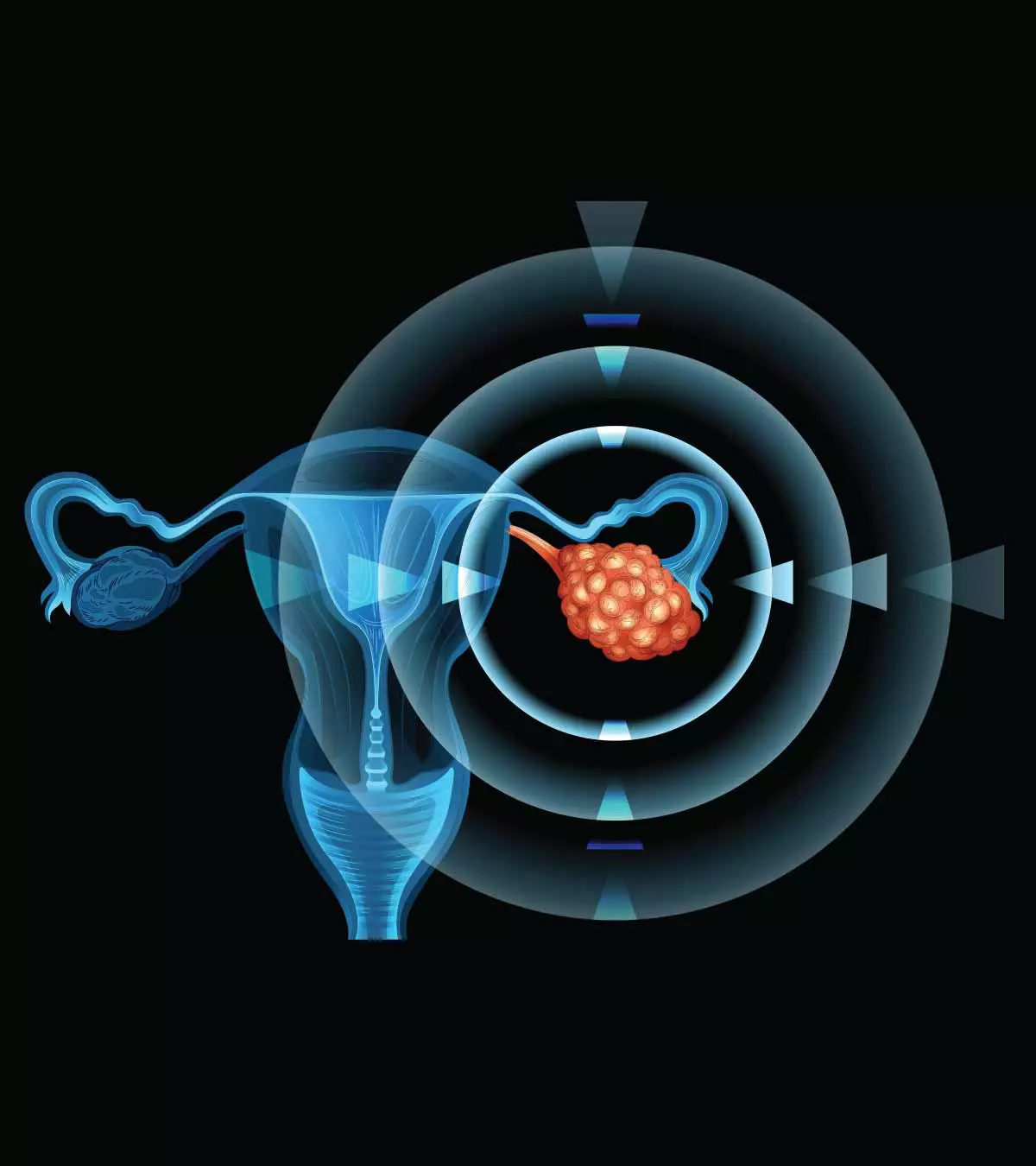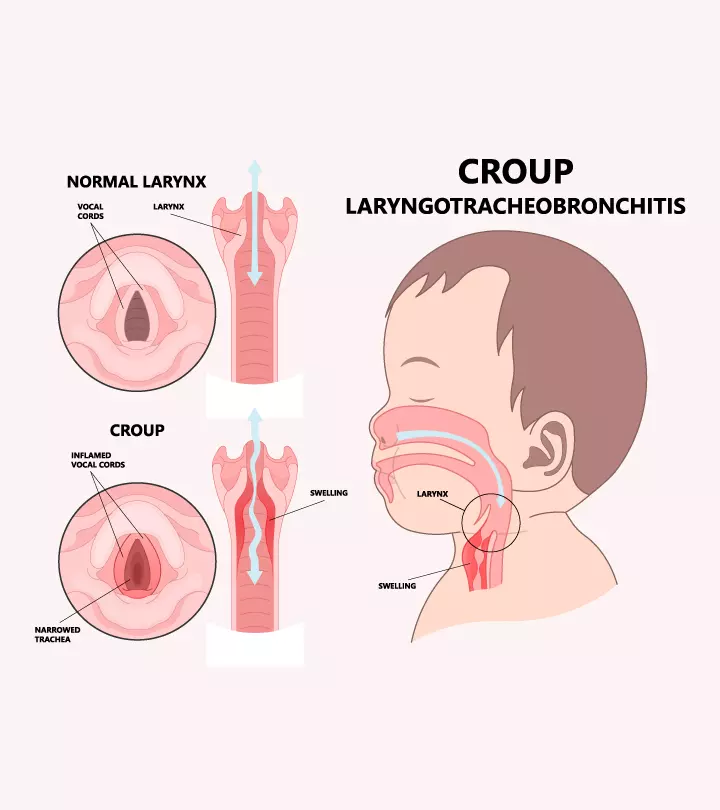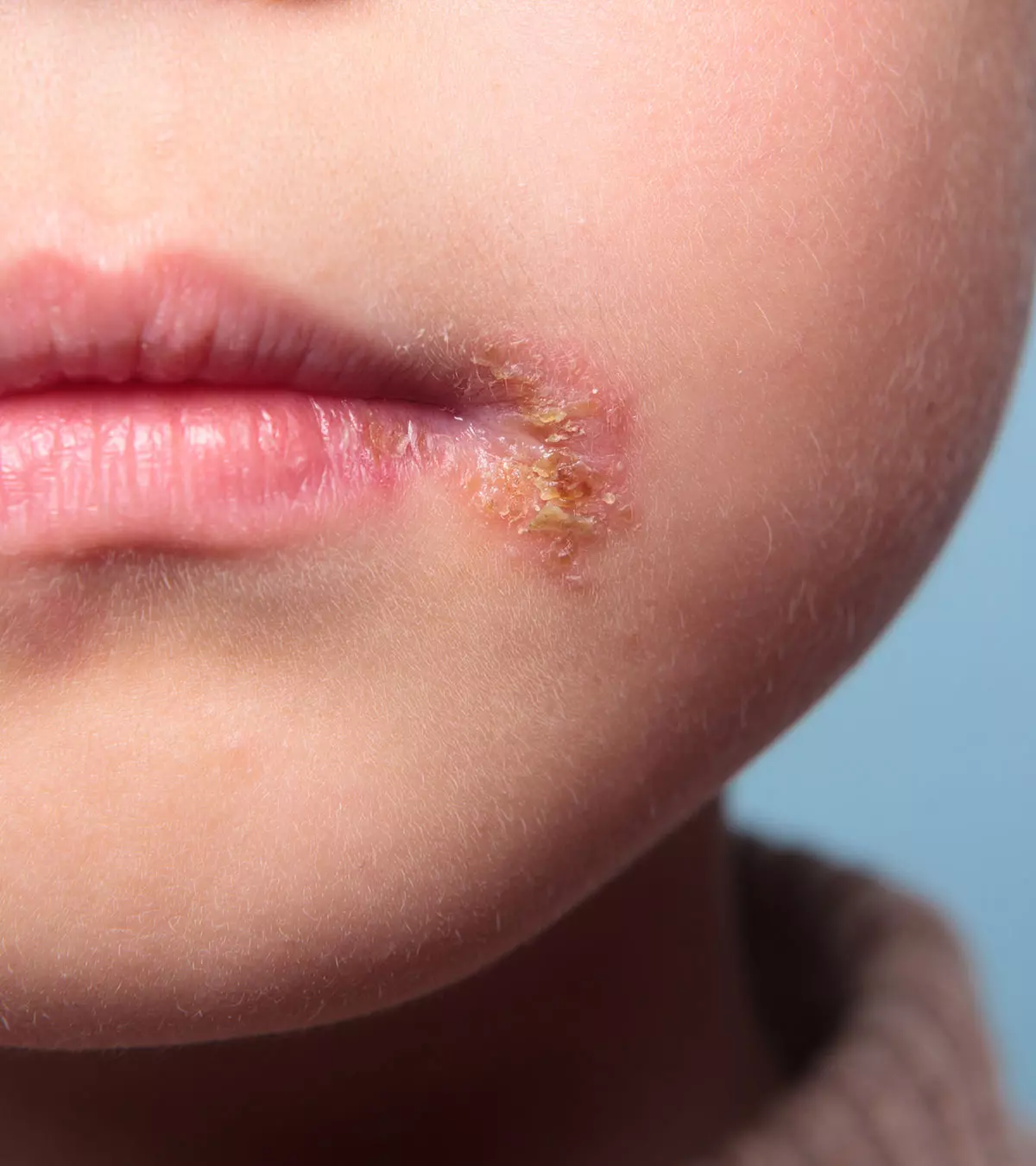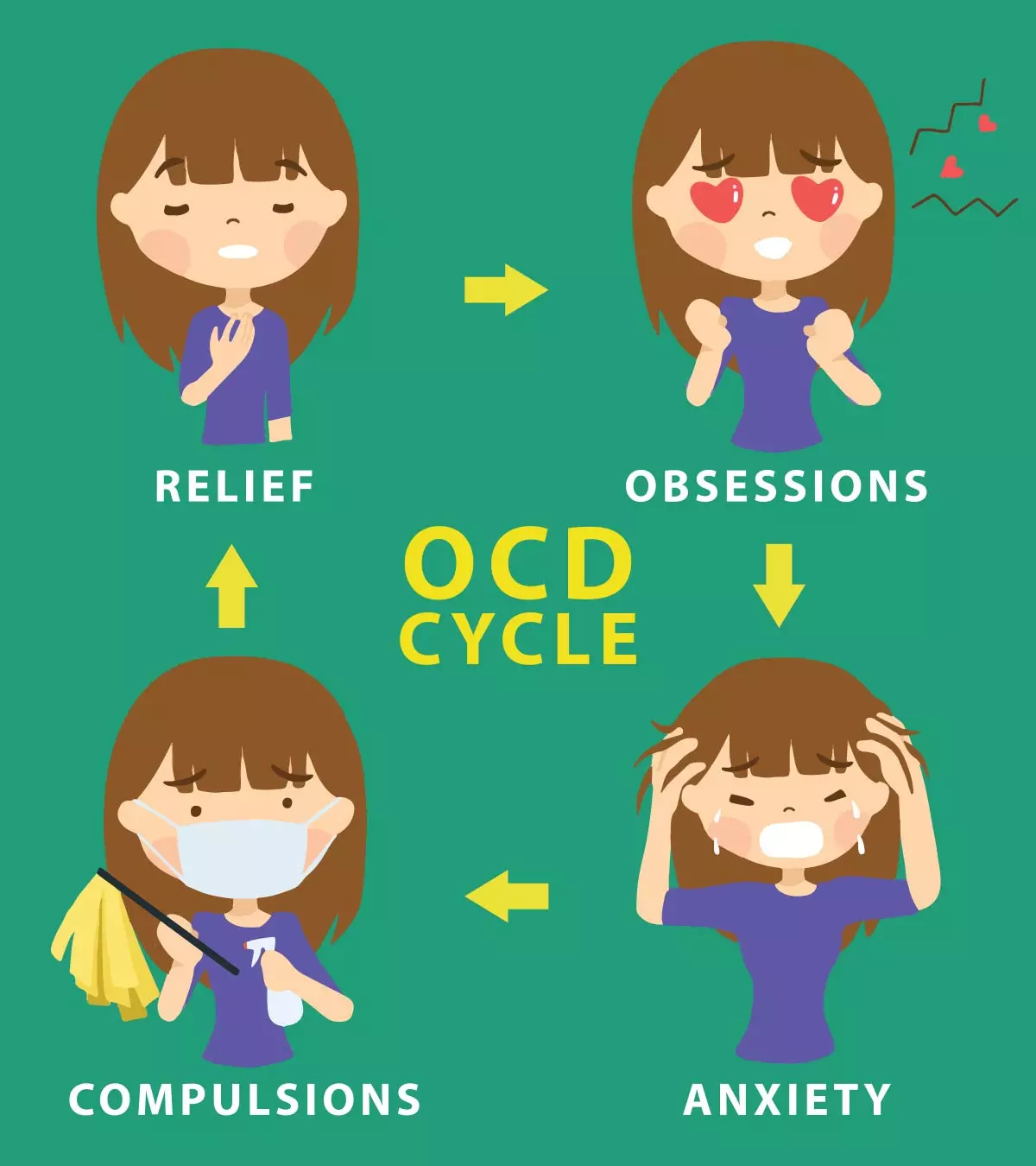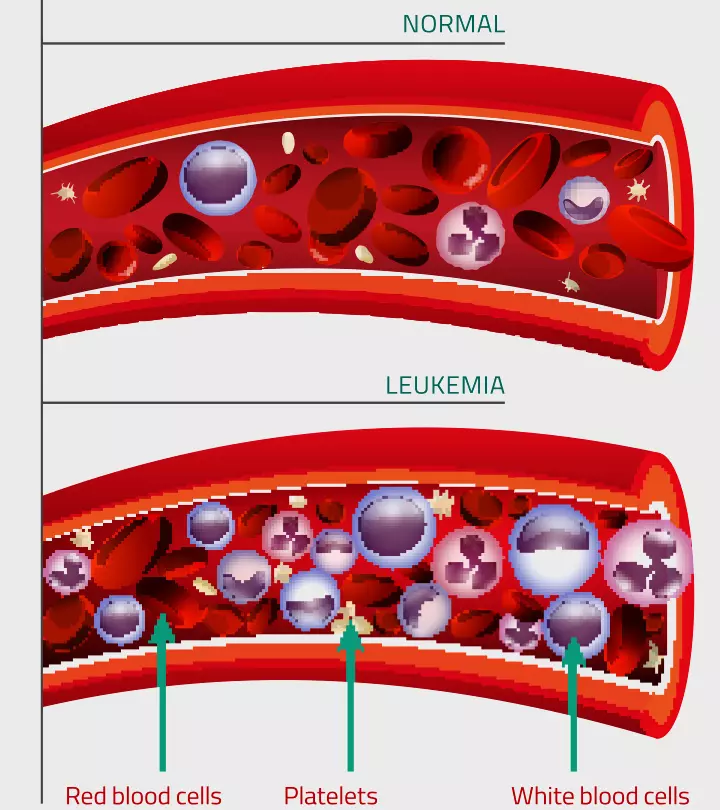
Image: iStock
Leukemia is the cancer of blood cells and usually originates in the bone marrow, where blood cells form

. When a teen has leukemia, the cancer cells divide and abnormally grow in the bone marrow and then migrate to the bloodstream. The cells are mostly immature white blood cells that replicate rapidly, suppressing the functioning of normal cells.
Leukemia in a teenager is the most common type of cancer, accounting for at least one in three childhood cancer diagnoses. Leukemia symptoms in teenagers may vary as per the type. Although most teens develop acute forms of leukemia, very few cases of chronic leukemia are reported (1).
Read on to learn more about the types, causes, symptoms, diagnosis, treatment, and outcomes of leukemia in teens.
Key Pointers
- The exact cause of leukemia is unknown in teenagers. It can be due to genetic mutations or environmental factors such as radiation or certain chemical exposure.
- Recurrent infections, abdominal pain, fever, loss of appetite, and seizures are common symptoms of this condition.
- Treatment depends on the severity and type of leukemia and also the teen’s age.
Types Of Leukemia In Teens

Image: IStock
Most leukemias seen in teenagers are acute and must be diagnosed and treated quickly to avoid disease progression. Leukemia is classified based on the type of cells involved and speed of progression (2) (3).
Leukemia is of two types based on the speed of progression.
- Acute leukemia: Develops quickly due to the rapid multiplication of immature cancer cells. The symptoms may appear suddenly, with an immediate need for medical attention.
- Chronic leukemia: Develops gradually due to the slow rate of multiplication in cells. The teenager might be asymptomatic for years. It is less common than acute leukemia.
Leukemias may be of two types based on the types of white blood cells involved.
- Lymphocytic leukemia: The cells affected are T lymphocytesiA type of white blood cells that help the body fight against infections and diseases. (T cells), B lymphocytes (B cells), or natural killer (NK) cells. These cells are an important part of the immune system, involved directly or indirectly in fighting infections.
- Myeloid leukemia: It affects neutrophilsiA subset of a type of white blood cells considered to be the body’s first line of defense and monocytes (white blood cells). These cells are involved in invading microorganisms such as bacteria and fungi.
Leukemias can be further divided into the following types based on the disease severity, duration, and progression.
- Acute lymphocytic leukemia (ALL): It is a rapidly progressing leukemia of the lymphocytes. ALL is the most common type of leukemia seen in older children and adolescents.
According to the statistics shared by the Leukemia Research Foundation, about 54% of ALL (acute lymphoblastic leukemia) occur in children and teens under age 20. It is most common before age 15 and after 50. The five-year relative survival rate for ALL as of 2018 is 71%.

Five-year survival estimate for acute lymphoblastic leukemia (ALL)
Source: Leukemia Statistics; National Cancer Institute (NCI)/Surveillance, Epidemiology, and End Results (SEER) Program- Acute myelogenous leukemia (AML): This is a steadily progressing leukemia of the myeloid cellsiA type of white blood cell that originates in the bone marrow and provides immunity. and accounts for other cases of childhood leukemia.
- Chronic lymphocytic leukemia (CLL): It is a rare type of leukemia in teens with slow progression and affects the lymphocytes.
- Chronic myelogenous leukemia (CML): This type of leukemia rarely affects children and teens. It is a slow-progressing type of leukemia of the myeloid cells. Hence, the child might be asymptomatic for years.
Causes Of Leukemia In Teens
There is no known specific cause of leukemia. Leukemia is considered to occur due to a combination of a diverse group of genetic and environmental factors such as those mentioned below (4) (5).
- Mutations in genetic material and translocations (one part of the chromosome moves to another part or another chromosome, creating a fusion gene with deviating activity).

Image: Shutterstock
- Abnormal cell growth and division, setting out an abnormal increase in the number of immature cells that hamper the normal cell functioning, potentially leading to leukemia.
- Certain chemical and radiation exposure, such as ionizing radiation, benzene, pesticides, and hydrocarbons.
Risks Factors Of Leukemia In Teens
Studies have shown that the following factors might increase the risk of leukemia in children and adolescents (1) (6).
- Having a family history of leukemia or siblings having leukemia
- Past treatment with chemotherapy
- Excess alcohol consumption and smoking

Image: IStock
- Illegal drug abuse
- Having a history of genetic disorders, such as Down syndromeiDown syndrome is a chromosomal disorder caused by the presence of an extra copy of chromosome 21, resulting in intellectual impairment and short stature
- Having an inherited autoimmune disorderiDiseases in which the body’s immune system mistakes healthy cells as foreign and attacks them
 Quick fact
Quick factSymptoms Of Leukemia In Teens
The symptoms of leukemia in a teen depend on the type and duration of the disease. In some cases, the teen might remain asymptomatic for years. The common signs of leukemia in children and teens include the following (7) (8).
- Fatigue, breathing problems, dizziness, and pale skin: These symptoms may indicate a low red blood cell count, and can potentially lead to anemia if not addressed promptly.
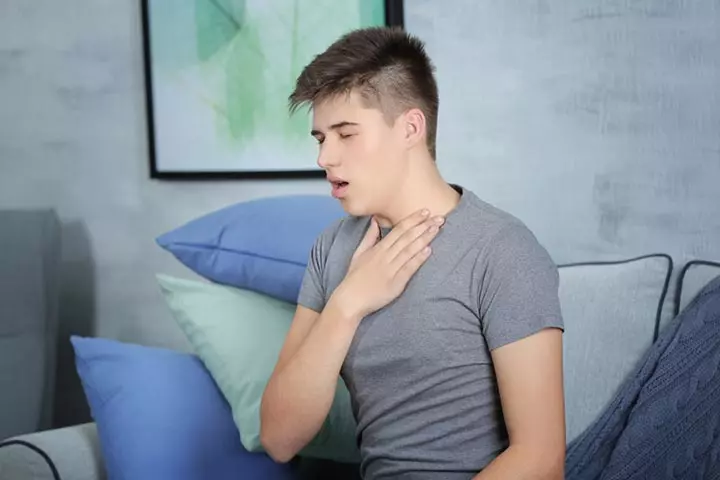
Image: Shutterstock
- Recurrent infections: Teens with leukemia have a shortage of white blood cells, which leads to severe and recurrent infections.
- Fever, chills, and body aches (flu-like symptoms): These can indicate an infection, but teens with leukemia may have a fever without infection. Another sign of cancer is chills and night sweating.
- Bruising, abnormal bleeding (in gums or nose): These signs indicate a low platelet count.
- Tenderness in bone and joint pains: Leukemia cells accumulate near the bone surface or between the joints, causing severe bone pain and tenderness.
- Abdominal swelling and pain: Swelling in the abdomen might be due to the buildup of cancer cells in the liver and spleen, causing an enlargement of these organs.
- Weight loss and loss of appetite: The enlarged liver and spleen might exert pressure on the stomach, due to which your teen might feel full after eating small amounts of food. Hence they may experience a loss of body weight and appetite.
- Swollen lymph nodes: In some cases, leukemia might spread to lymph nodesiSmall, bean-shaped structures that help the body fight infection and disease by filtering lymph fluid , leading to the swelling of lymph nodes, which might be felt as lumps under the skin.
- Headaches, seizures, and vomiting: These signs might indicate the spread of cancer cells to the brain and spinal cord. Other symptoms include blurred vision, poor concentration, and balance problems.
Many symptoms of leukemia may resemble those of infections and other illnesses. Seek a doctor’s opinion to determine the underlying cause early.
Tyler Blah, a leukemia survivor, medical student and avid YouTuber shares, “Essentially I had managed to develop a bad flu that lasted for over a week. It was during that one week that I also managed to lose about three kilos and that weight loss was really unexpected. I think that the most interesting part about that time was that I was on a very controlled diet and exercise regime so my weight was very closely scrutinized around that. So when there was a three kilo loss it was very obvious that it clearly couldn’t have been due to diet or exercise, which are normally the things that could potentially contribute to a loss of weight. Interestingly it was a combination of the flu and my loss of weight that led the doctors to think that they should probably consider a blood test…. It was from there that I then got my diagnosis of Acute Myeloid Leukemia” (i).
 Quick fact
Quick factDiagnosis Of Leukemia In Teens
The pediatrician will assess the symptoms and may provide medication initially. If the child shows no improvement with the initial medication and has no underlying infection, the doctor may suspect leukemia and suggest the following tests to confirm (9).
- Physical examination and medical history: In a physical exam, your teen’s doctor will check for enlarged lymph nodes, abdominal swelling, bruising, signs of bleeding, and infection. In medical history evaluation, the doctor might ask your teen about family history, the duration of symptoms, and any possible exposure to chemicals, radiation, and other risk factors that may contribute to the development of leukemia.
- Blood tests: A complete blood count includes tests performed to check for an abnormal count of blood cells, including red blood cells, white blood cells, and platelets. A blood smear can help visualize various cell types microscopically. Other blood tests such as complete metabolic panel (CMP), liver function test (LFT), and coagulation panel might be ordered by your teen’s doctor as well.
- Bone marrow examinations: The tests include bone marrow aspiration and biopsy. Bone marrow samples are usually collected from the hip bone and evaluated for the presence of leukemia. The test is performed under anesthesia.
- Histological assays: The tests include flow cytometry and immunohistochemistry. These tests are often done on bone marrow cells to identify the type and localization of cancer.
- Lumbar puncture: This test is helpful to visualize the presence of leukemia in the brain or spinal cord by analyzing the cerebrospinal fluid (CSF). The samples are taken from the spine area by applying a numbing cream. The teen might also be given anesthesia for the procedure.
- Chromosomal analysis: These tests are used to identify the changes at the chromosomal level and help in analyzing the treatment outlook. The tests may include fluorescent in situ hybridization (FISH) and next-generation sequencing (NGS) to check for genetic changes involved in causing leukemia.
- Imaging: These tests include X-rays, CT scans, MRI scans, and ultrasounds. These imaging modalities are useful in determining leukemia-related structural and functional abnormalities in the body.
Early diagnosis of leukemia in adolescents is vital to determine the type of leukemia and provide suitable treatments and hospitalization as and when required to facilitate an early and successful recovery.
Treatment For Leukemia In Teens
Your teen may need treatments for infections and low blood counts before the commencement of leukemia treatment. Your teen’s oncologist designs the treatment for leukemia based on the type and severity of leukemia and the age and health status of your teen (10).
Below are the various treatment options for leukemia in teenagers.
- Chemotherapy: Chemotherapy is a primary treatment option for most leukemias in children and adolescents. Anti-cancer medications might be given orally or intravenously in this therapy to destroy cancer cells. There are three main phases in chemotherapy — induction, consolidation, and maintenance.
- Targeted therapy: Targeted therapy uses drugs that destroy cancer cells with the help of target-specific proteins.
- Immunotherapy: Immunotherapy, also known as biotherapy, uses medications to help the immune system recognize and destroy cancer cells. Several types of immunotherapy, such as immunotherapy with interferon, are used to treat leukemia.
- Stem cell transplantation: The stem cell transplant, also known as bone marrow transplant, is a procedure where the affected bone marrow is replaced with a healthy one. High-dose chemotherapy or radiation therapy is given to destroy the affected bone marrow. Blood-forming stem cells are then transplanted to replace the damaged cells.
- Radiation therapy: This therapy uses strong, high-energy radiation to destroy cancerous cells. It may be considered to avoid the further spread of leukemia to the brain. This therapy may not always be recommended to treat leukemia in children due to side effects such as nausea, vomiting, hair loss, skin changes, headaches, diarrhea, and fatigue. These side effects may be temporary or persist for a prolonged period in some teens (11).
Regular follow-ups with your teen’s doctor are paramount to evaluate the treatment prognosis and identify any side effects of medications.
Prognosis Of Leukemia In Teens
The outcomes or prognosis of leukemia depends on the type, severity, duration, and treatment responsiveness. Early diagnosis, tailored treatment interventions, and frequent follow-ups have significantly impacted the prognosis of this disease (12). In most cases, teens free from any disease symptoms for five years after treatment are considered to be cured since relapse after this duration is less common.
Complications Of Leukemia In Teens
The possible complications of leukemia in children and teens may include the following (13).
- Infections and bleeding
- Risk of developing other types of cancer
- Emotional and mental disorders

Image: IStock
- Heart, lung, and kidney diseases
- Fertility problems
The teen may have late or long-term complications from the treatments, which may include the following (1) (14).
- Learning disabilities
- Growth and developmental delays
- Higher risk of osteoporosis
- Behavioral problems
- Trouble in vision and hearing
- Thyroid problems in teens
- Risk of heart and lung diseases
- Increased risk of cavities and gum diseases
- Emotional and psychological problems
You may need regular visits during and after treatments to ensure their effectiveness with minimal adverse effects.
Prevention Of Leukemia In Teens
There are no known ways to prevent leukemia in children or teens. Most teens who develop leukemia have no known risk factors. Nevertheless, the risk of developing cancer can be reduced by following certain lifestyle changes such as quitting smoking and assuring low levels of exposure to radiation. Furthermore, The American Cancer Society supports preventive programs that suppress tobacco use and promote a nutritious diet, regular exercise, and a healthy lifestyle in children and teens (15).
Leukemia in teens is a form of blood cancer with no definitive cause. Although leukemia diagnosis could be devastating for your teen and your family, it is possible to manage the disease when detected early (depends mainly on the degree of severity). However, seeking support from your friends and family could help you cope with this situation emotionally and practically. Discuss how to manage your teen’s leukemia with the healthcare professionals to choose the right treatment strategies. With recent advancements, most teens are successfully treated and progress into healthy adulthood. Finally, be optimistic and support your teen on their road to recovery.
Frequently Asked Questions
1. What is the life expectancy of a teenager with leukemia?
Life expectancy in children with leukemia is described in terms of the five-year survival rate. It refers to the percentage of children who survive a minimum of five years after their leukemia diagnosis. The five-year survival rate for children with acute lymphocytic leukemia (ALL) is around 90% overall, and for acute myelogenous leukemia (AML) is 65 to 70% (16).
2. Can teens fully recover from leukemia?
With early detection and treatment of children with ALL or AML, a cure or a long-term, disease-free life is possible for many (17).
3. How can teens help manage the emotional and psychological effects of living with leukemia?
Teens with leukemia can cope with emotional and psychological impacts by educating others about their condition, documenting symptoms, maintaining open communication with healthcare providers, adopting a healthy lifestyle, informing educators of their requirements, and ensuring regular follow-up care and check-ups (21). Also, consider joining community groups and organizations for leukemia and cancer support. These groups can help keep you updated on any research or new developments while also providing emotional and social support.
4. How does leukemia affect a teen’s schooling and social life?
Childhood leukemia or lymphoma can profoundly impact a teenager’s education and social interactions in the long run. These consequences encompass learning impairments, physical obstacles such as fatigue and stunted growth, and psychological effects such as altered mood and behavior (21).
5. What can be done to manage pain associated with leukemia treatment in teens?
To alleviate pain related to leukemia treatment in teenagers, a diverse team of experts must offer personalized evaluations and interventions. Sustained, considerate pain management is essential for enhancing survival rates and minimizing the impact of pain on overall quality of life (22).
Infographic: Symptoms Of Leukemia In Teens
Teenage leukemia is a treatable blood cancer when detected early. Therefore, recognizing the signs is crucial for timely treatment and preventing complications. Here is an infographic that lists the typical signs and symptoms of leukemia in teens. Seek medical attention if these symptoms persist for an extended period.
Some thing wrong with infographic shortcode. please verify shortcode syntaxLeukemia is a devastating disease that affects children and teens. Learn more about how it affects them and how to help.
Personal Experience: Source
MomJunction articles include first-hand experiences to provide you with better insights through real-life narratives. Here are the sources of personal accounts referenced in this article.
i. My Leukemia symptoms.https://www.youtube.com/watch?feature=shared&v=QXDXmVMu1q8
References
- Leukemia in Children.
https://www.cedars-sinai.org/health-library/diseases-and-conditions—pediatrics/l/leukemia-in-children.html - Leukemia.
https://www.cancer.columbia.edu/cancer-types-care/types/leukemia/about-leukemia - What Is Childhood Leukemia?
https://www.cancer.org/cancer/types/leukemia-in-children/about/what-is-childhood-leukemia.html - Joseph Wiemels, (2012). Perspectives on the Causes of Childhood Leukemia.
https://www.ncbi.nlm.nih.gov/pmc/articles/PMC3839796/ - What Causes Childhood Leukemia?
https://www.cancer.org/cancer/types/leukemia-in-children/causes-risks-prevention/what-causes.html - Martin Belson, et al; (2006). Risk Factors for Acute Leukemia in Children: A Review.
https://www.ncbi.nlm.nih.gov/pmc/articles/PMC1817663/ - Signs and Symptoms of Childhood Leukemia.
https://www.cancer.org/cancer/types/leukemia-in-children/detection-diagnosis-staging/signs-and-symptoms.html - Leukaemia.
https://www.teenagecancertrust.org/information-about-cancer/leukaemia?gclid=CjwKCAjwsKqoBhBPEiwALrrqiNwfAbMLzhL23wHYCiqK1HHq2ZRxOsZLn7T2K4K8qbD_grzL-EFEzxoCgywQAvD_BwE - Tests for Childhood Leukemia.
https://www.cancer.org/cancer/types/leukemia-in-children/detection-diagnosis-staging/how-diagnosed.html - Leukemia in Children.
https://www.urmc.rochester.edu/encyclopedia/content?ContentTypeID=90&ContentID=P02324 - Radiation Therapy for Acute Lymphocytic Leukemia (ALL).
https://www.cancer.org/cancer/types/acute-lymphocytic-leukemia/treating/radiation-therapy.html - Survival Rates for Childhood Leukemias.
https://www.cancer.org/cancer/types/leukemia-in-children/detection-diagnosis-staging/survival-rates.html - Leukemia.
https://www.cincinnatichildrens.org/health/l/leukemia - Late Effects of Childhood Cancer Treatment.
https://www.cancer.org/cancer/childhood-cancer/late-effects-of-childhood-cancer-treatment.html - Todd P. Whitehead, et al; (2016); Childhood Leukemia and Primary Prevention.
https://www.ncbi.nlm.nih.gov/pmc/articles/PMC5161115/ - Survival Rates for Childhood Leukemias.
https://www.cancer.org/cancer/types/leukemia-in-children/detection-diagnosis-staging/survival-rates.html - Leukemia
https://www.nationwidechildrens.org/conditions/leukemia - Teenage Leukemia Symptoms
https://fwaya.org/teenage-leukemia-symptoms/#:~:text=Leukemia%20is%20a%20form%20of,the%20blood%20and%20bone%20marrow - What Are the Causes of Leukemia?
https://www.moffitt.org/cancers/leukemia/diagnosis/causes/ - Monoclonal Antibody Therapy for Cancer
https://my.clevelandclinic.org/health/treatments/22774-monoclonal-antibody-therapy - Long-Term and Late Effects of Treatment for Childhood Leukemia or Lymphoma Facts
https://www.lls.org/sites/default/files/file_assets/longtermlateeffectschildhood.pdf - Flaminia Coluzzi et al., (2025); Pain Management in Childhood Leukemia: Diagnosis and Available Analgesic Treatments
https://www.ncbi.nlm.nih.gov/pmc/articles/PMC7762342/
Community Experiences
Join the conversation and become a part of our nurturing community! Share your stories, experiences, and insights to connect with fellow parents.
Read full bio of Dr. Supriya Mahajan
Read full bio of Vidya Tadapatri
Read full bio of Dr. Ritika Shah
Read full bio of Dr. Joyani Das

 Point to consider
Point to consider




